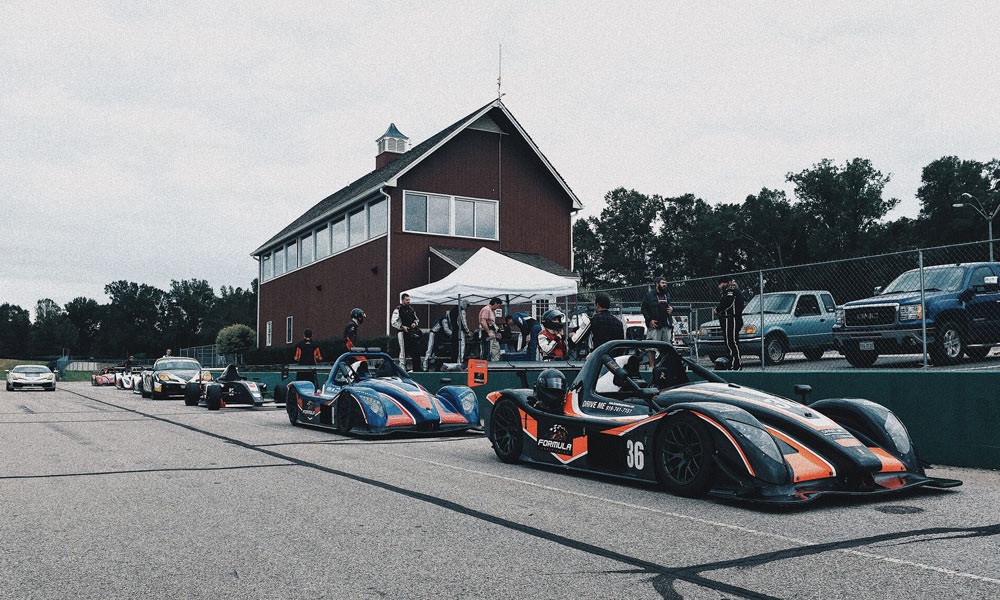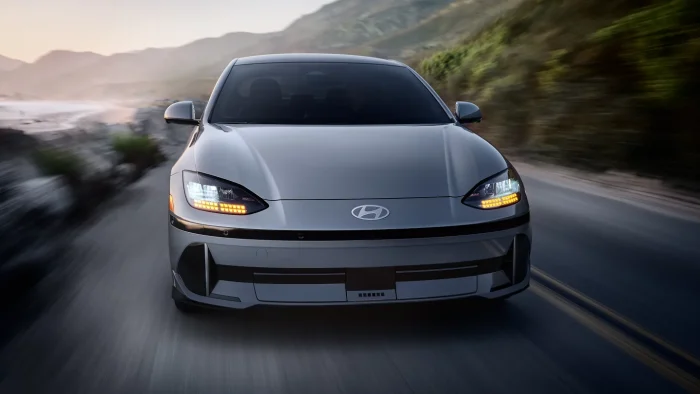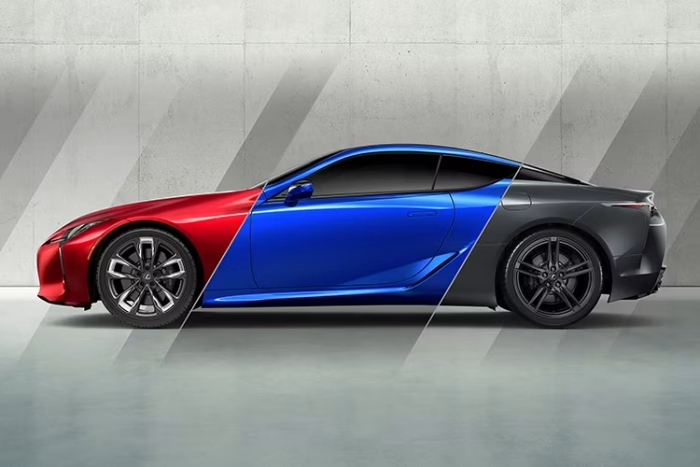The opportunity to get behind the wheel of a race car has been a dream of ours for as long as we can remember. There’s something about the smell of gasoline and burnt rubber that has always enamored our senses and gotten our hearts racing. So, when we were given the opportunity to try our hand at some real deal Formula cars a couple weeks back, thanks to Formula Experiences, we didn’t hesitate.
We flew down to the VIRginia International Raceway, where Formula Experiences is based, in order to check out their driver program and get behind the wheel of some very fast cars we probably weren’t qualified to be driving.
Want to know what it’s like to pilot one of these mean machines? Allow us to fill you in on what it’s like to drive a Formula race car.
Quick note: It’s important to specify that these aren’t F1 cars. Those death traps take a lot of training to learn to drive, and even then, if there’s one thing we’ve learned from watching Top Gear all these years, it’s that F1 cars are actually a total pain in the ass to drive. That said, we got behind the wheel of two cars: The “entry level” Radical Sportscars SR1, and a bona fide F4 spec car. But more on those later.
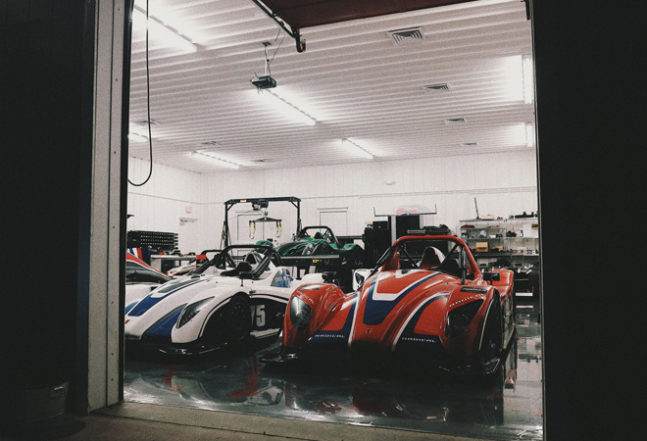
Day 1—Training, Ride Along, and Driver Simulators
Formula Experiences is on a 1,300-acre property, complete with a bar and grill, lodging, and training center, which means we basically checked into our room on the property, and then got right to work.
Naturally, they can’t just let people hop into these $120k cars and throttle out, with zero training or guidance, so some learning was first on the agenda. We hit the track for an intense evening ride-along with CEO and Founder Peter Heffring. After watching Heffring practically navigate the track with his eyes closed, we shuffled back to the garage where we were outfitted in fire suits, helmets, boots, etc., and then given a crash course in how to not crash. We got a breakdown of the tricky sections of the course, compensating for understeer and oversteer, and the ins and outs of braking properly.
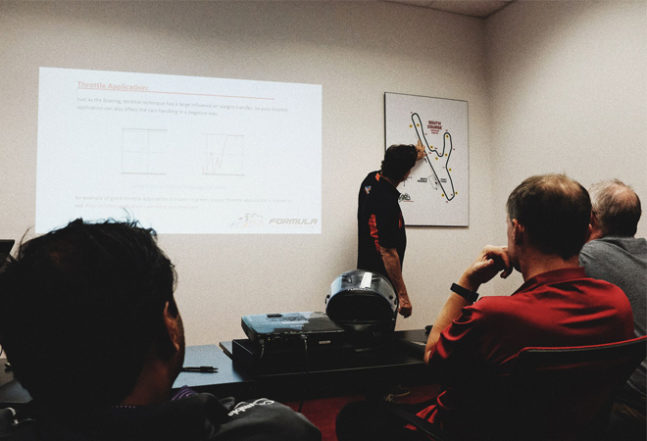
After that, we signed our waivers, and hit the driver simulators, where we tried our best—mostly to no avail—to not crash into walls. We bonked so hard coming through Turn 7 that we literally flipped the car over. After an hour or two on the simulators, we went to our room to get a good night’s sleep before race day. We’d be lying if we said we didn’t feel drastically under-prepared.
Day 2—Experiencing the Real Deal
After some last-minute seat time in the simulator, we were off to the track.
We started out behind the wheel of one of Radical Sportscars’ SR1s, which came equipped with a 175 horsepower 1340cc Suzuki motor, carbon composite dashboard, fully adjustable suspension, and a six-speed paddle shifted gearbox.
The only time we needed to use the clutch was to get going in first gear. From then on out, it was all on the paddles.
We got a few laps in on the SR1, and immediately noticed it was way easier on the track than on the simulator. All of the things we’d learned in the classroom the night before—keep on the throttle through Turn 7 or you’ll spin out, watch for the blind turns coming into Turn 3 and Turn 4, make sure to angle properly and roll on the throttle as soon as you hit the cone in Turn 5, etc.—started coming back to us, and it wasn’t long before we were really testing the abilities of the SR1 (and our own skills).
The SR1 is a physically bigger car than the F4 spec, and we also learned that it was a lot smoother to drive. None of these racecars have power steering or ABS, but the throttle on the SR1 was smooth as silk. You can actually hear in the videos the difference between the throttle response on the F4 and the SR1 car, and how smooth one is compared to the other.
That said, after a couple quick sessions in the SR1 and a quick break for lunch, we headed back on out to the track, where we got to try our hands behind the wheel of Formula Experiences’ F4 spec car. We were warned early on that this car was a lot more of a bull than the SR1; it was louder, shakier, faster, its throttle was more erratic, and it was more difficult to control. The tires look longer to heat up, and it took more speed to generate down force, which meant that we needed to stay on the throttle or else risk losing traction and flipping the car over in real life.
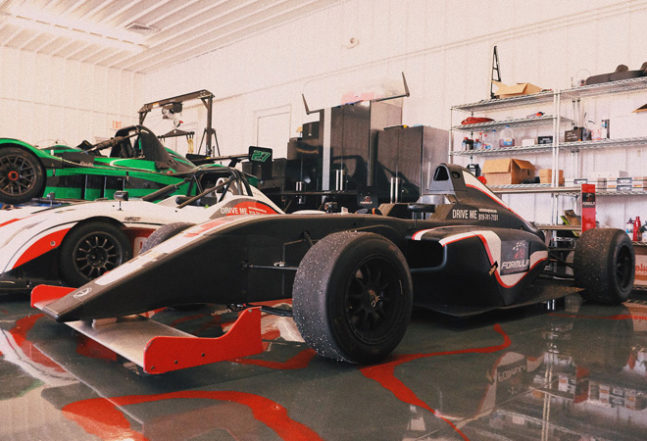
We knew the car would kick our asses if we let it, so we made sure we played things fast and loose.
The cockpit was much tighter than the SR1’s, and the seating position was arranged in a way that made you feel like you were leaning way back into the seat, at an angle that was almost like laying down in a recliner—only, this recliner would be traveling at over 130 miles per hour, an inch or so from the ground at all times. The done-up Honda K20 motor was stuffed into the back of the lightweight carbon composite body (the whole thing weighed just over 1,200 pounds), and the over 2.0 Gs of lateral force pinned you in the seat.
This car was an absolute animal in the best way. If you really want to experience what it’s like to get down and dirty in a Formula car without being an actual professional formula driver, this is about as close to the real thing as you’re going to get.

